
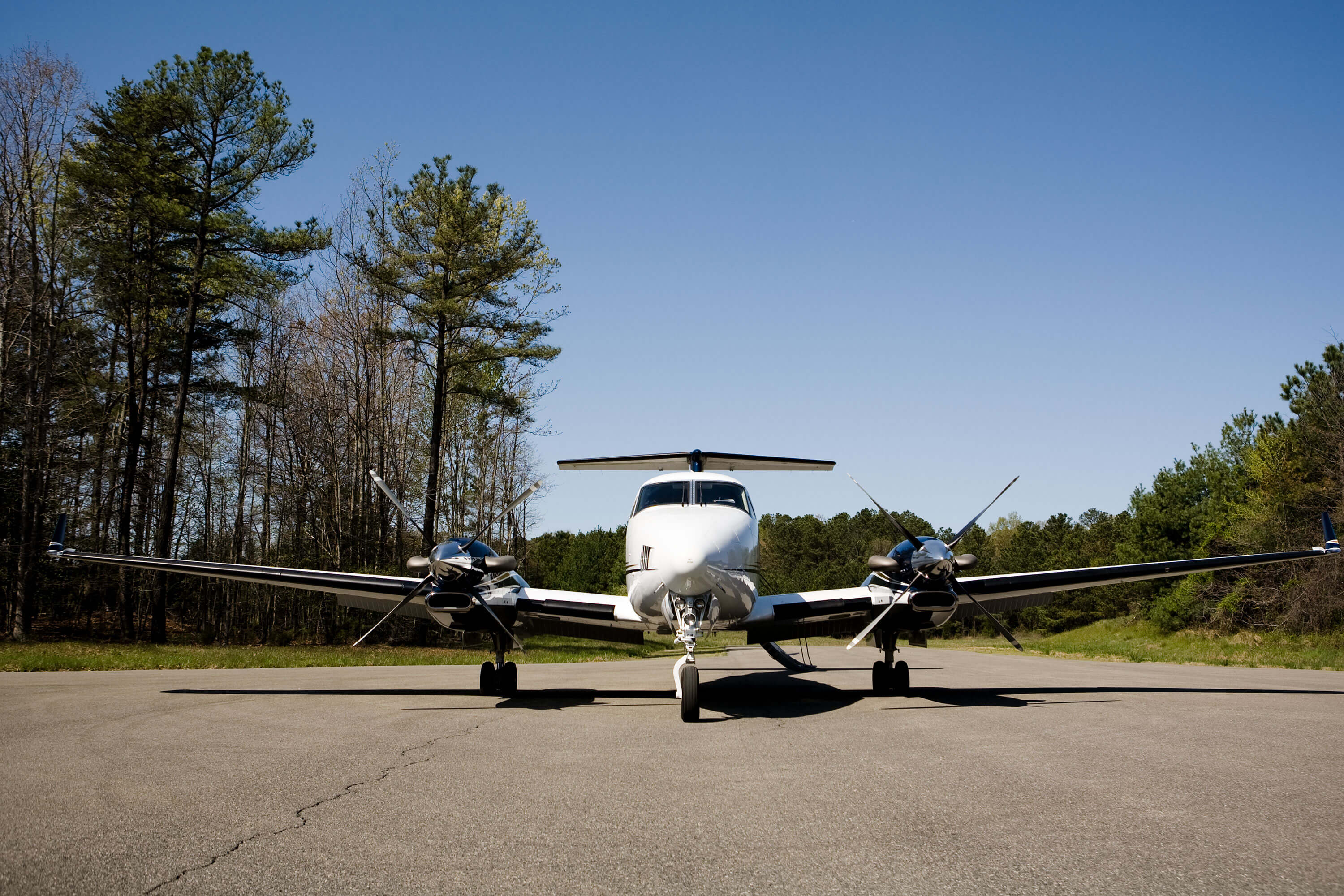
Business Aviation Helps Luck Stone Mine Opportunities
June 1, 2008
For anyone in the housing industry, these are challenging times. So why has Luck Stone – a family-owned, Manakin, VA-based supplier of stone construction products – remained rock solid in its commitment to business aviation, even as activity in their economic sector slows?
It’s simple, said Jay Coffman, vice president for human resources: “You don’t save your way out of a downturn; you sell your way out. Strategically, we need to look at how we are going to increase our business. Our strategy is to exit an economic downturn stronger; to leverage our competitive advantage, and the airplane magnifies our advantage.”
Charles S. Luck, IV, Luck Stone’s president and CEO, explained that he and his management team are using a Beech King Air 350 to visit the company’s 16 stone, sand and gravel plants scattered across the Southeast in part to boost the morale of the firm’s 1,000 employees.

“Our leadership presence is more at a premium during weak times than in good times,” Luck said. “Our people want reassurance; they want to have face-to-face meetings with their leaders to air their issues. Having that two-way interaction leaves the 30 people who work at a typical site in a whole different mindset than before the management team got there. That translates into productivity and customer service, things that make our company more competitive.”
Traveling to see customers during these times also is important, said Luck. “Our customers often are equally anxious during periods of economic uncertainty. They know their own immediate customers, but we bring them data on economic trends and history, so we serve as a resource for their own recession planning.”
Everyone feels pressure to cut back during lean periods; however, Luck asserted, “There still are business opportunities in slow times. By using the airplane as a tool, we are able to retain more employees, keep sales higher and minimize losses in a slow period.”
A Variety of Missions
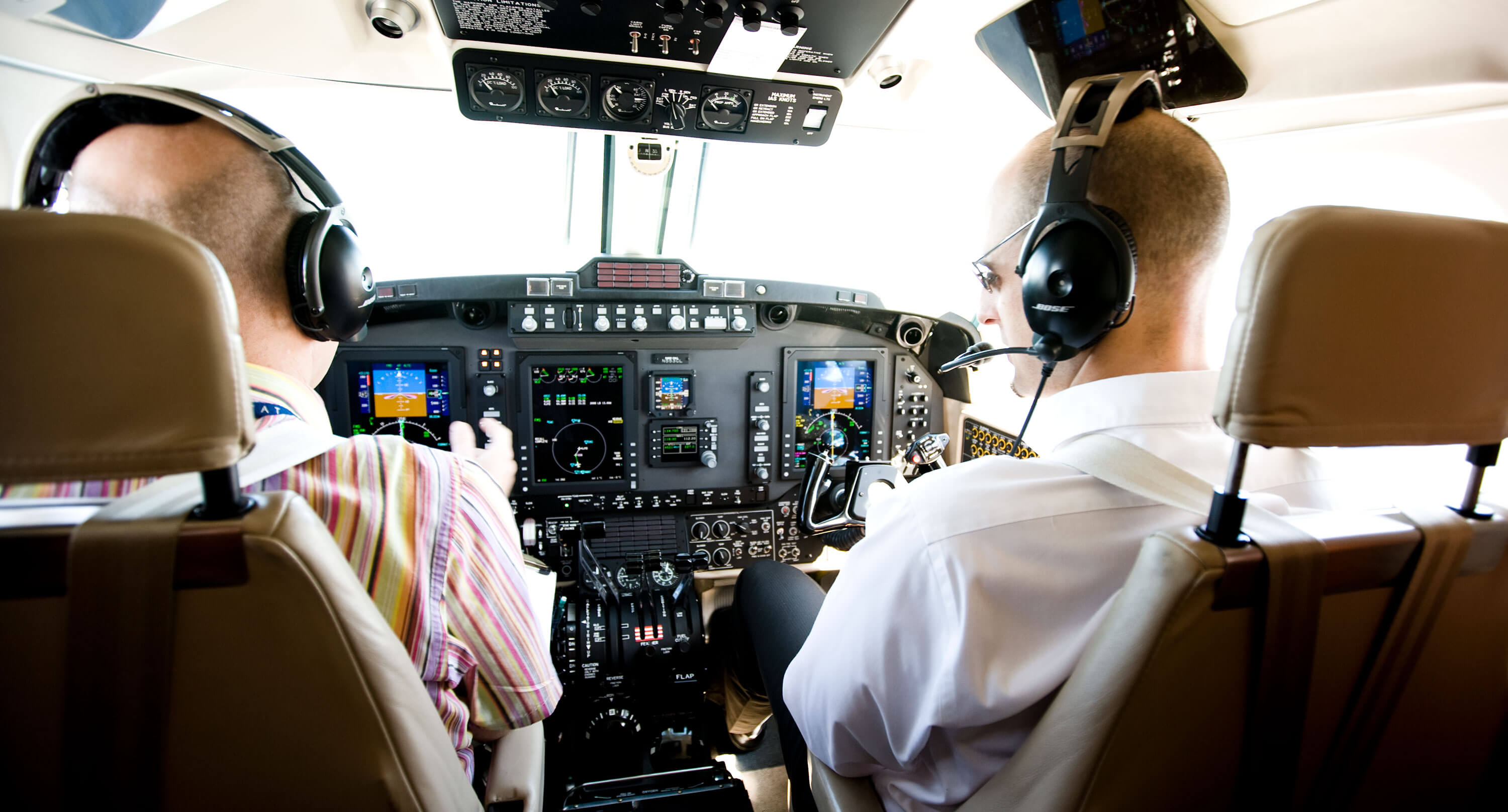
Since 1972, people at all levels of the company have been flying out of the 3,900-foot-long, company-owned airport (0VA5) in Rockville, VA, just 10 minutes from company headquarters. The original company airplane was a Beech Baron, but over the past two decades, Luck Stone has flown a series of twin-engine aircraft, including a Cessna 421 and 421C and three different King Airs.
Today, Luck Stone’s King Air 350 flies up and down the East Coast, sometimes to the Mississippi River and occasionally farther west. The airplane operates three to four times a week, usually out and back the same day, with multiple stops to accommodate company personnel traveling to different destinations along a given route.
The flight department’s goal is to accommodate every associate who needs to fly, regardless of whether an employee works at the company’s Charles Luck Stone Center, at one of its construction aggregate sites, in its Lee Tennis Court Products Division, or for Luck Development Partners. “The plane is not for executives,” said the CEO, who estimates that other employees use the airplane 90 percent of the time.
“ By using the airplane as a tool, we are able to retain more employees, keep sales higher and minimize losses in a slow period. ”
Besides transporting Luck Stone people, the King Air has been used to fly in prospective customers to see the countertops, fireplaces and other quality products the company sells for residential use. The airplane also has transported consultants, international suppliers and job recruits, as well as cancer patients via the Corporate Angel Network.
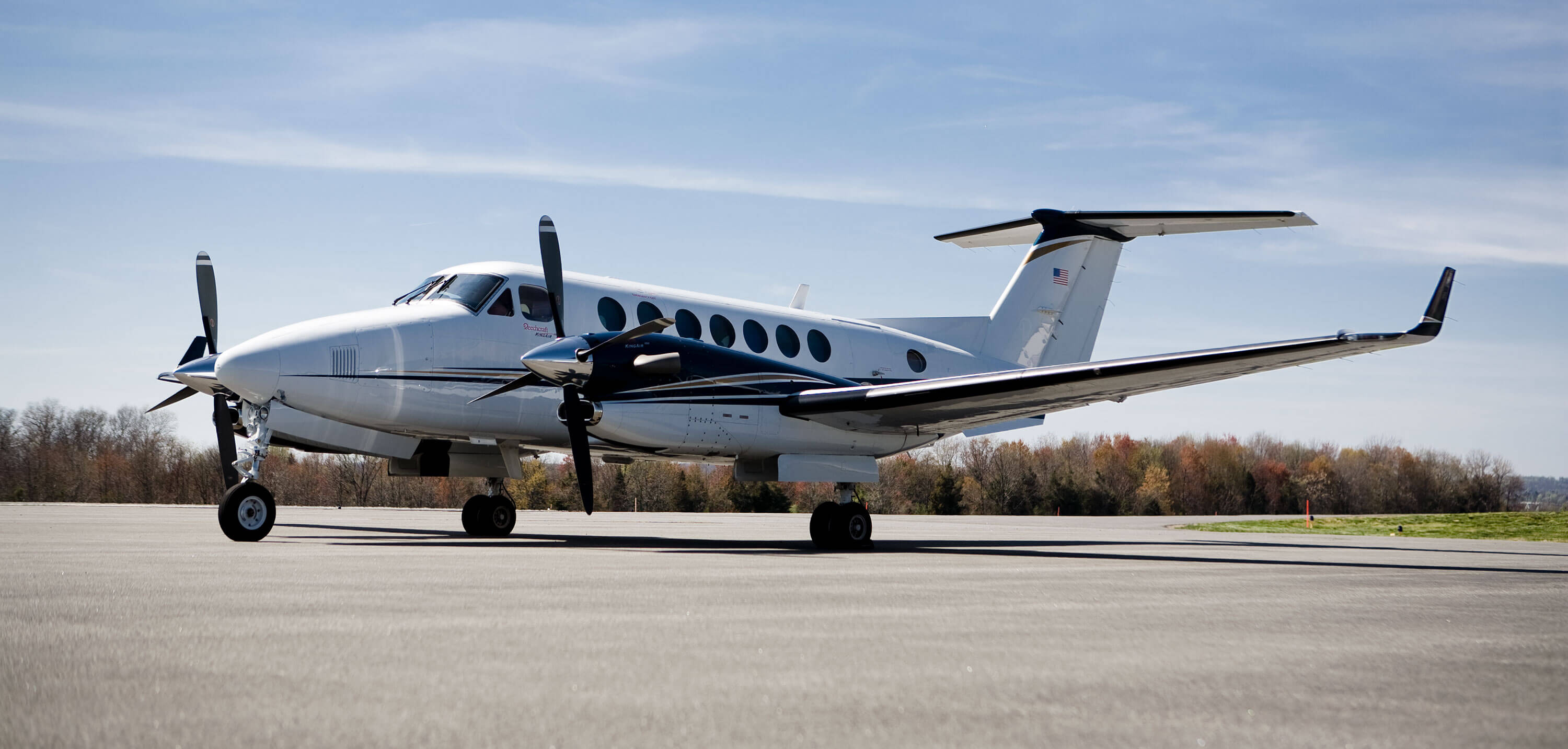
Luck allowed for even greater access to the aircraft two years ago, by introducing a new policy aimed at boosting its use. Under the new policy, when an employee books the airplane, his department is charged for the cost of the trip. If empty seats on that trip are available, associates from other departments traveling in the same general direction can occupy the seats free of charge. The approach has resulted in higher utilization of the aircraft.
Even when trips last more than one day, the airplane helps maximize productive time and reduce traveler fatigue. For example, a Luck Stone team recently flew to Montreal, leaving Rockville at 7:30 a.m. and arriving at 9:30. “We had an incredibly meaningful meeting on the way up,” said Luck. “From 10:30 a.m. until 11:30 that night, we were involved in meetings on the ground. There is no way we would have survived until 11:30 if we had flown commercially,” he said. The meetings resumed the next day at 7:30 a.m., and Luck said, “We were sharp, ready to go. We got back in the plane at 3:00 p.m., dealt with a bunch of issues on the way home and were on the ground [in Rockville] at 5:00 p.m.”
Work/Life Balance and Safety
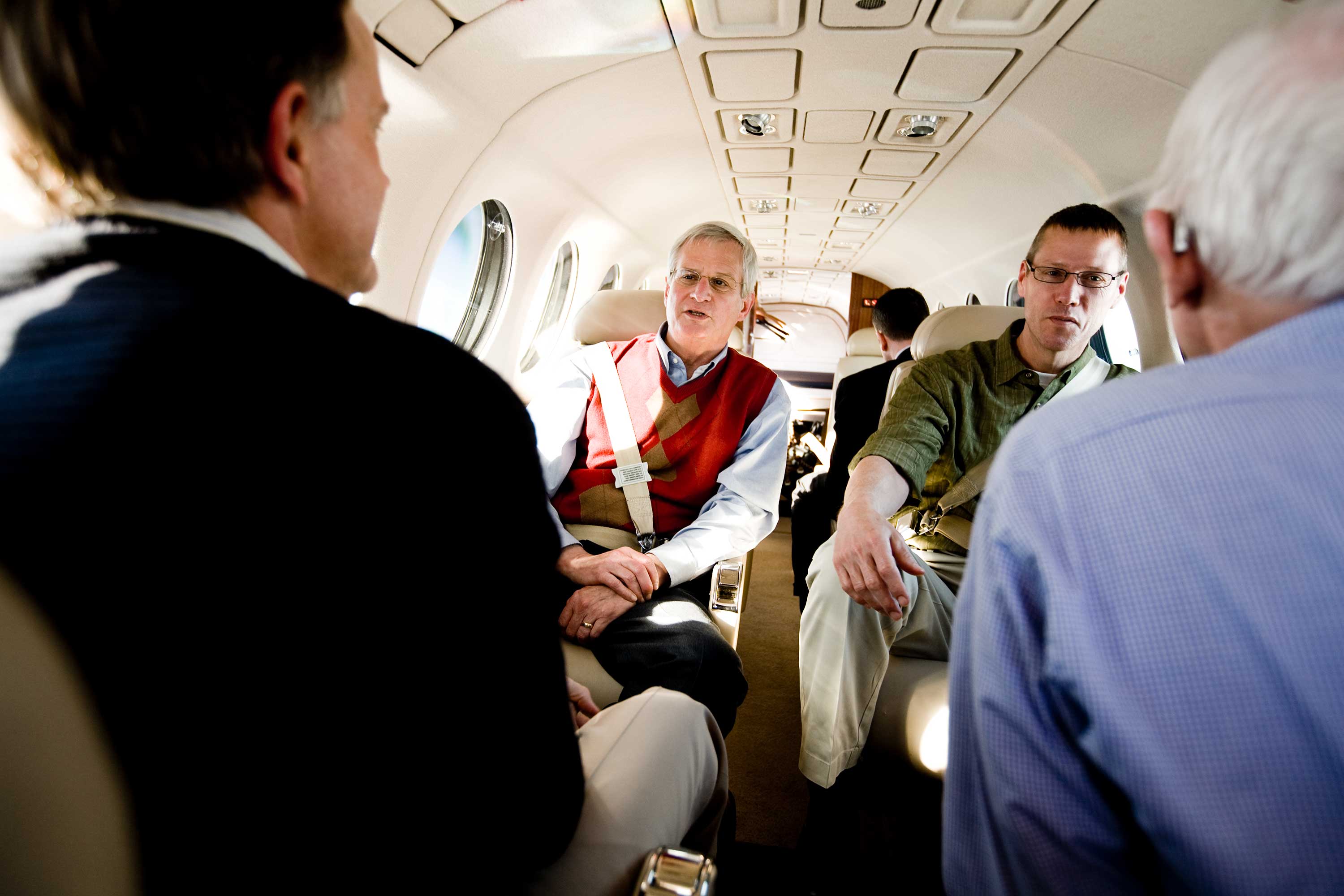
Luck Stone’s leadership team truly cares for the company’s associates, and that attitude is reflected in the way the airplane has been used to attract and retain key personnel. A perfect example is Mark Whitfield, senior product manager for Charles Luck Stone Centers.
“I used to work for a European company, and I was on the road constantly,” said Whitfield. “That’s why I looked for other job opportunities. What appealed to me about Luck Stone was having access to a company plane. With the plane, my trips typically can be done in one day, so it has been a great benefit to me and my family.
“It also is very effective for the company,” added Whitfield. “It allows us to see more customers, and when we go visit customers, we send more than just one person. If we had to fly commercial and bring five people, we might not be able to afford it.”
While the Luck Stone King Air seems to be on the move constantly, safety is always a top priority. “We take great pride in our safety record,” said Scott Moore, Luck Stone’s chief pilot. “We have had 37 years and 9,315 hours of accident-free flying, and we do everything we can to keep things safe.”
Moore says he has been given full authority by top management to “do the right thing” when it comes to operational decisions. Moore and his copilot, Ryan Blanchard, undergo recurrent training as a crew once a year. They believe that people should train like they operate. “We challenge ourselves,” says Moore. During training, they have simulated various emergency procedures, including V1 cuts with approach flaps down on short runways. In addition, the Luck Stone pilots have practiced right-seat and no-electrical-power landings and taken classes in cold-weather operations, approach and landing accident reduction (ALAR) and controlled flight into terrain (CFIT) avoidance.
Value of NBAA and Looking Forward
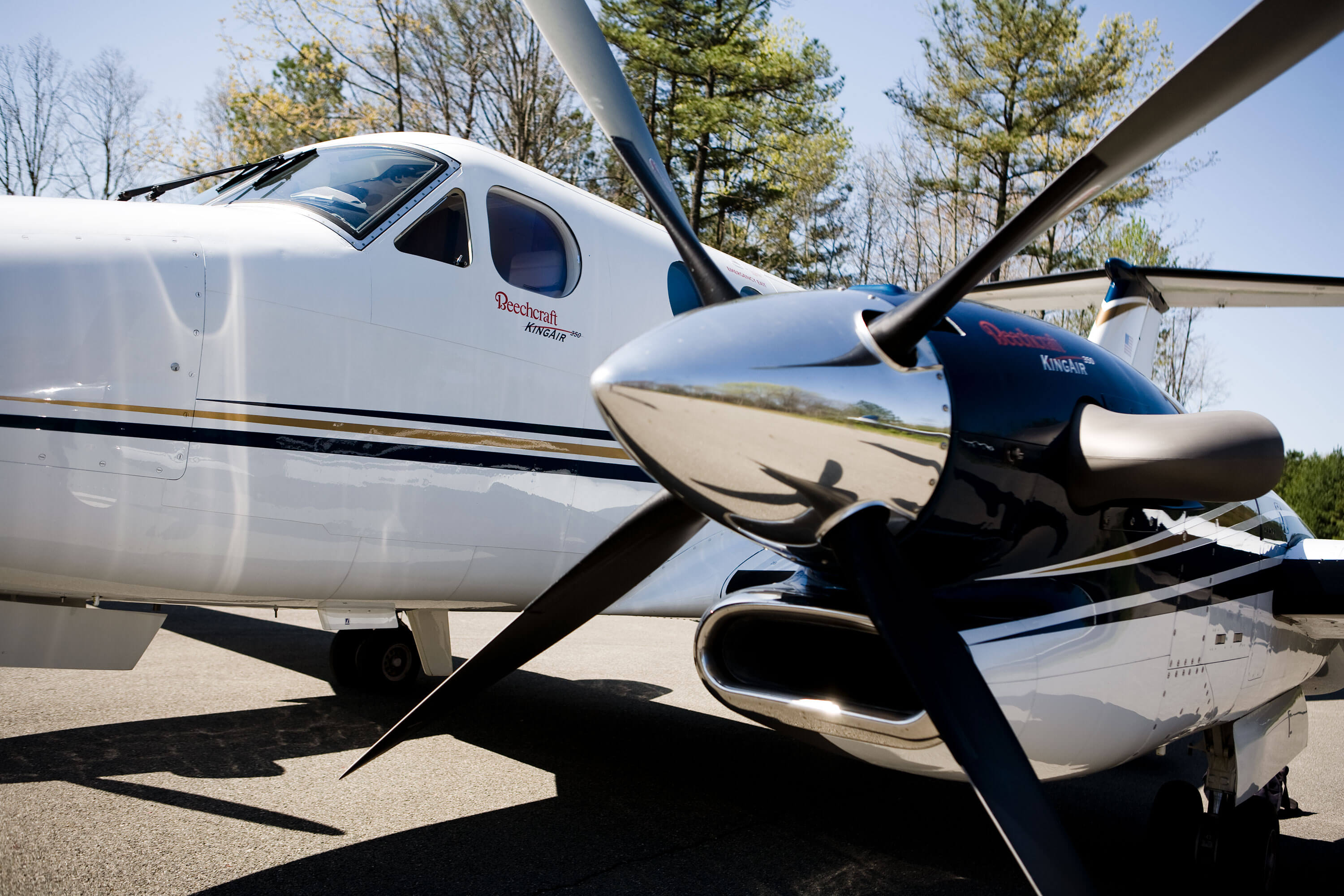
Because Moore and Blanchard must handle all of Luck Stone’s aviation matters themselves, they appreciate the support and resources NBAA has provided. “NBAA has done a great job in advocacy,” said Moore, who is an avid reader of Air Mail and various Association publications, “and the web site is a gold mine of information.”
Moore, who attended his first NBAA Annual Meeting & Convention shortly after retiring from the Air Force, said the event “was a great education for me since I was new to business aviation. The networking was great; I got to see what aircraft were available to meet the company’s growing needs; and I attended information sessions on insurance and maintenance.” Moore said Luck Stone plans to send someone to NBAA’s new Light Business Airplane Exhibition & Conference next spring.
Once the housing sector rebounds, Luck Stone plans to extend its reach, and business aviation will continue to support the company’s long-term growth plans. In the meantime, Luck Stone’s aircraft will continue to help position the company for the next rebound, just as it has in previous challenging times.
BUSINESS AVIATION INSIDER
This article originally appeared in the May/June 2008 issue of Business Aviation Insider.
Download the magazine app for iOS and Android tablets and smartphones.


 International Business Aviation Council Ltd.
International Business Aviation Council Ltd.